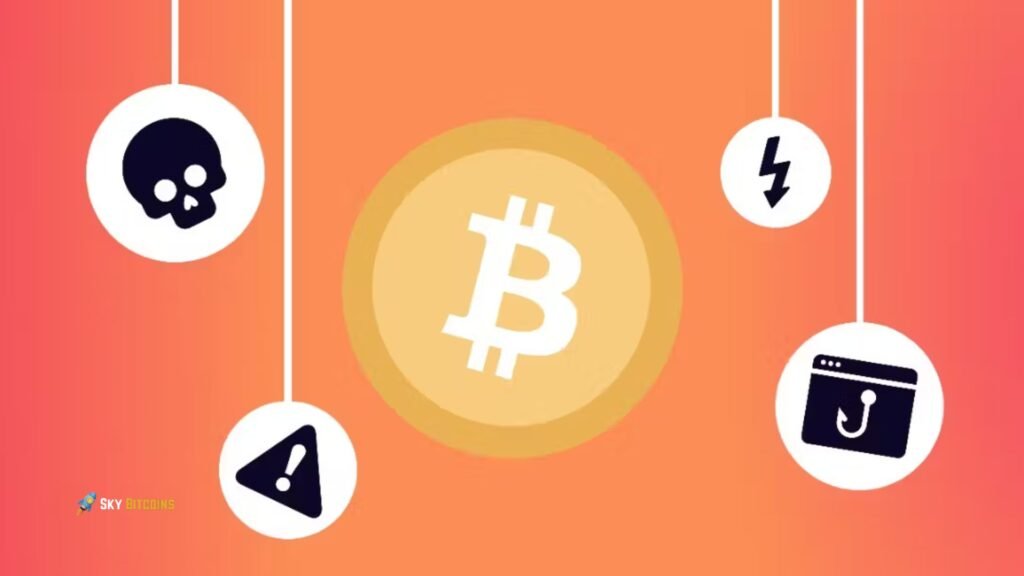Since its launch in 2009, Bitcoin—the first decentralized cryptocurrency—has transformed the global financial scene. It claims to be built on blockchain technology, removing intermediaries like governments and banks from transactions while increasing transparency and security. Scams and frauds involving Bitcoin have become more common as its value and popularity have increased. There has been a dramatic increase in the number of Bitcoin scam trading systems in the past few years. These systems use the intricacies of bitcoin trading to trick and steal from unsuspecting investors.
Understanding Bitcoin Trading Systems
Bitcoin trading systems, platforms, or software tools make buying, selling, and exchanging Bitcoin easier. Automated trading bots, real-time trading data, market analysis tools, and educational materials are some features that users of these systems can expect to find. Crypto exchanges like Kraken, Binance, and Coinbase are reputable examples. However, scam trading techniques have surfaced within these legitimate platforms. These scam systems look and act like the real thing, promising users easy-to-use interfaces, minimal risk, and guaranteed large profits. They intend to deceive naive investors into parting with their Bitcoin or fiat currency, then steal or use it to manipulate trading for their gain.
Common Types of Bitcoin Scam Trading Systems

Ponzi and Pyramid Schemes
The Ponzi scheme is a prevalent kind of Bitcoin scam trading method. These solutions guarantee substantial profits for investors with minimal risk. The truth is that they give the impression of profitability by paying returns to earlier investors with the money that new investors put in. Many people lose a lot of money when the system crashes because no one will put money into it. Similarly, pyramid systems incentivize members to bring in more members. They receive additional commissions based on the number of people they bring in. Pyramid schemes and Ponzi schemes are both unlawful in most countries and cannot succeed in the long run.
Phishing Scams
The use of spoof websites or emails that seem like official Bitcoin exchanges is a common tactic in phishing scams. Scammers access users’ wallets and steal their funds after tricking them into inputting their login credentials or private keys. As phishing scams have evolved, con artists have gotten better at mimicking real platforms so closely that users have difficulty telling them apart.
Fake Bitcoin Investment Platforms
Another common kind of fraud is the development of phoney Bitcoin investing platforms. These sites frequently appear in search engine results and social media ads, promising visitors a chance to invest in Bitcoin with a guaranteed return. These platforms aren’t involved in the financial or trading world. But what really happens is that they steal users’ money and then vanish.
Pump-and-Dump Schemes
One such type of manipulation in the Bitcoin space is pump-and-dump scams. Scammers will use social media and other platforms to excite a cryptocurrency—typically a lesser-known one—hoping unsuspecting buyers will acquire it at an inflated price. When the price hits a particular point, the scammers cash out, sending the price tumbling and leaving other investors with coins that don’t have any value. This isn’t unique to Bitcoin, but it is a typical scam in the cryptocurrency industry as a whole.
Malware and Ransomware
Hackers can also exploit Bitcoin fraud trading platforms to propagate malware. Free trading tools or software offered by scammers can inadvertently install harmful apps on customers’ devices. These apps can steal sensitive information, such as Bitcoin wallet details, or even encrypt users’ devices until they pay a ransom in Bitcoin.
How Bitcoin Scam Trading Systems Operate

- Luring Investors: Scammers entice investors with alluring marketing, claims of large returns, false reviews, and celebrity endorsements. Social media, forums, and email are common places to see these advertisements. It is common practice to send interested parties to an official-looking website or app once they express interest.
- Creating a Sense of Urgency: Scammers make it seem like they need an investor’s money quickly so that they won’t give it any thought. Some may even go so far as to say that the chance is temporary or that the profit guarantee is short-lived.
- Convincing Investors to Deposit Funds: Once users arrive at the platform, they are incentivized to fund their accounts with Bitcoin or fiat currency. Scammers routinely offer bonuses and other incentives to enhance the amount of the initial deposit.
- Manipulating Trades or Disappearing: There are usually two outcomes following a deposit. If the scam trading system is any good, it will either steal the user’s money by manipulating trades to the platform’s advantage or vanish.
- Preventing Withdrawals: To encourage consumers to deposit more money, there are circumstances where they can see “profits” in their accounts. They make a profit, but they can’t access it because of all the red tape that gets in the way.
How to Spot a Bitcoin Scam Trading System
Even while fraudulent platforms are sophisticated, there are signals you may look for to prevent a Bitcoin scam trading system. Be wary of claims of guaranteed large returns with little risk, especially in the volatile cryptocurrency industry. Scam platforms often promise you unique deals or limited-time specials to get you to act fast. Also, one of the hallmarks of fraud is dishonesty. Unlike legal trading platforms, scam sites often hide their workforce, location, fees, and regulatory compliance.

Ensure the trading system has authorization from a recognized financial authority; platforms without licenses or regulations should also raise red flags. Scammers often employ inflated success stories, celebrity endorsements, and fake testimonials to entice unsuspecting victims. Independently check ratings and recommendations at all times. Last, you can tell it’s a fraud if the platform has hidden costs or makes withdrawing funds difficult. You may safeguard against Bitcoin scam trading techniques by exercising caution and conducting comprehensive research.
Protecting Yourself from Bitcoin Scam Trading Systems
- Research Thoroughly: Do your homework on Bitcoin trading platforms before committing any money to one. Verify the platform’s regulatory licensing, read reviews from reputable sources, and learn more about the developers.
- Use Reputable Platforms: If you must trade Bitcoin, choose only reputable and well-established services. Crypto exchanges and wallets like Kraken, Coinbase, and Binance are well-known for their trustworthiness and openness.
- Be wary of High Returns: Platform promises of an extremely high return with low risk are likely exaggerated. Because of the inherent uncertainty of cryptocurrency trading, no reputable platform can guarantee success.
- Enable Two-Factor Authentication: Before opening an account with any trading platform, ensure they have many layers of protection, including two-factor authentication (2FA).
- Never Share Private Keys: Your Bitcoin wallet can be accessed with private keys. If you aren’t sure an online form is secure, don’t enter or share it with anybody.
- Stay Informed: Scammers are getting smarter, and the bitcoin market is changing constantly. Stay updated on the most recent frauds and methods employed by con artists.
Conclusion
Scammers have flocked to the Bitcoin market, hoping to take advantage of its unregulated nature and the new opportunities it has brought to investors. Investors can safeguard themselves from falling prey to Bitcoin scam trading methods by arming themselves with knowledge and exercising care. People can continue to engage ethically and safely in the cryptocurrency revolution if they are aware of the strategies used by scammers and take efforts to protect their investments.
Also Read: Bitcoin Margin Trading for Beginners: A Comprehensive Guide


